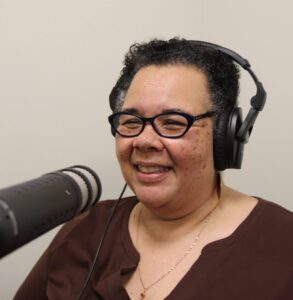
Reading Connects, Expands, Illumines: a Collage
Reading. Our family was a reading household. Newspapers, magazines, books – purchased and borrowed from many kinds of libraries – were sprinkled throughout our home. Each day three newspapers were delivered to our house: the Philadelphia Enquirer, the Bulletin, and the Daily News. On Tuesdays and Thursdays my dad purchased the Philadelphia Tribune from the corner store. On Sundays, my mother received the New York Times for the fashions and crossword puzzle.
Also, our list of magazines subscriptions was plentiful. Each month the postman delivered: Psychology Today, Ebony, Jet, Better Homes & Gardens, Reader’s Digest, Life, National Geographic, Journal, Good Housekeeping, and Redbook. My brother and I shared (fought over) Highlights. We also regularly purchased comic books, coloring books, and puzzle books. When my parents purchased a set of the World Book Encyclopedia and proudly displayed them in the living room for guests to see, my brother and I were baffled by their excitement. We made use of those encyclopedias for many, many years.
~~~~~~~
We think of literature as being divorced from people, when in fact, people are intimately connected by reading. What we choose to read is often cherished. I didn’t realize it as a child, but now I know that connections between family members, friends, and colleagues are strengthened, deepened and improved by reading. We can, a little bit, glimpse an individual’s inner-self by understanding their reading choices.
~~~~~~~
The required reading in courses speaks about who the teacher is.
~~~~~~~
By the time I was age 10 or 11, the periodical I read most consistently and thoroughly was Psychology Today. Some of the content I understood. Most – I did not. I was aided by the well-placed photos, bold sub-titles, and the frequently included colorful charts and grafts. I read the magazine because my dad read it. My dad was a school psychologist. Every two weeks, he checked-out books from the library on child and adolescent psychology, pedagogy, epistemology and anthropology. At the library, I helped him in the card catalogue search using the Dewey Decimal system. Of course, when I tried to read his library books, I could not understand them – too dry and no pictures. But I quickly learned that I could read, at least a little bit, the Psychology Today magazine. I read what my father read to better understand his curiosities, interests and concerns. Reading what he read helped me glean his love for teaching and his commitment to children.
~~~~~~~
Reading illumines. For several years, I took Master of Divinity students with me to the professional guild meeting and conference of scholars of religion. Together, we attended the American Academy of Religion and the Society for the Study of Biblical Literature (AAR/SBL). The best part of attending the conference with my students was their joy in meeting the authors of the books we assigned in courses. When they met the authors, asked for their books to be signed, and took selfies (yes – it was that kind of moment!) – my hunch is that the students’ respect and perspective about the texts deepened.
One such joyous moment was when a group of students gasped, then ran down the hotel corridor to meet Dr. James Cone. Dr. Cone, flattered, paused, took selfies and signed all their books. Many other scholars at the meeting received similar “star” treatment. We had fun.
~~~~~~~
What we read does not float in the ethers untethered from their authors and readers.
~~~~~~~
At the start of my courses, soon after rehearsing the syllabus, I would show pictures and or have my students view TedTalks and YouTube videos of the authors of the assigned texts. Throughout the course I invited the authors of the texts as guests – either live or on zoom. I wanted students to experience the authors’ voice, personality, and quirkiness. Inviting authors into the classroom brought an excitement and added dynamism to the conversation. It matters who wrote the book. Knowing the author’s social location, political bend, and intention assists the student in reading critically, emphatically, and with deeper meaning-making possibility. Hearing directly from the author about their scholarly lives and writing made learning more human. I wanted students, especially when the authors were BIPOC colleagues, to know that people who write books are as assorted as the books themselves.
~~~~~~~
Ask your students what kinds of texts they routinely like to read and why.
Ask yourself what you like to read and why.
~~~~~~~
I have learned that an effective way to gather people, have good conversations, establish relationships, is to start a reading group. Twice, just after moving to a new town where I knew hardly any one, I started a reading group. Both groups, in relative quick fashion, coalesced into a group who enjoyed one another’s company. In both cases, even though I no longer live in either place, I still maintain friendships with the people who were members of those groups. The intimacy of reading, discussing, sharing, sometimes arguing and fussing, together, is the stuff of friendship and collegiality.
~~~~~~~
Invite students to texts they would not find on their own. The magic of reading is that it can and does connect, expand and illumine all of us.
Leave a Reply